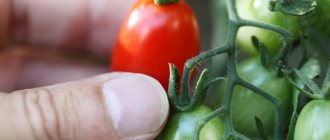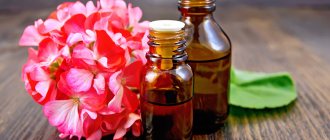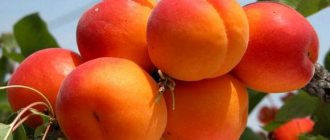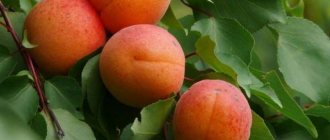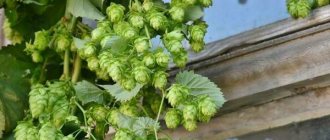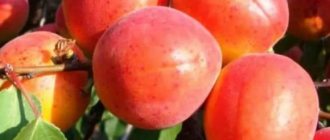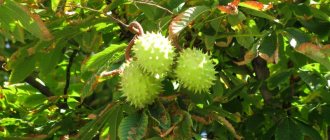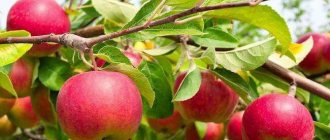Hello, lovers of house plants and those who have just decided to have a useful indoor plant at home. Today I’ll tell you how to grow lemon balm on a windowsill or balcony and how to properly care for it. This option is suitable if it is not possible to grow in open ground.
Indoor lemon balm has beneficial properties and decorates the interior.
Is it possible to grow lemon balm on a windowsill?
Melissa is no exception: you, dear gardeners, can also grow it at home. The height of this plant rarely exceeds 1 m, so I can easily place a pot of lemon balm on the windowsill.
The main thing is to choose the sunny side and take care of regular watering and pruning of the bushes.
Are you into plants and have a free, sunny place on the windowsill? Try growing ginger at home - easy care and a popular fresh seasoning always at hand.
Varieties and varieties
There are a large number of varieties and varieties of the plant. They differ:
- height and shape of the bush;
- intensity of aroma;
- shades of leaves and flowers;
- cold resistance.
Lush bushes up to 1 m high in the Dozya variety. The leaves are dark green with teeth, strongly fragrant. The flowers are white. "Pearl" has corrugated leaves with large teeth. Withstand Russian winters:
The varieties with leaves of golden shades are distinguished by their special decorativeness:
- “pure gold”, the white flowers of which eventually turn into light lilac;
- “golden” (“variegated”) with dark green leaves covered with a variegated golden pattern.
The plant is an excellent honey plant. All varieties of lemon balm attract bees with their scent.
The best varieties for growing at home
Among the varieties of lemon balm, I will highlight those that are better suited than others for growing indoors rather than outdoors.
Author's note
Natalia Papanova
Blog author
Some varieties of lemon balm can be confused with mint shoots.
How to determine whether it is mint or lemon balm is in front of you is described in detail in the video:
Lemon scent
This variety is distinguished by its large size: the bush grows up to a meter in height. The leaves take the shape of a heart, their edges are cut with small teeth. The surface of the leaf is painted bright green with yellow splashes.
This variety can be purchased in the form of seedlings, which are planted in open soil or a pot.
This is the variety I chose! In order for the plant to take root in new conditions, I regularly prune the bush.
The variety received this name due to the presence of vitamin C and essential oils, as in lemon juice. Therefore, lemon balm is used for:
- stomach upsets;
- heart pain;
- after stressful situations and nerve disorders;
- colds;
- toxicosis in pregnant women.
Author's note
Natalia Papanova
Blog author
For medicinal purposes, use dried leaves in rooms with suitable ventilation.
Have you decided to grow medicinal herbs? Then be sure to find out how to grow green onions in a window. )
The Lemon aroma variety has a characteristic odor
Pearl
The leaves of plants of this variety acquire a darkish tint. The leaves themselves are oval with a smooth surface. Shoots can be cut for use after two years of age. The “Pearl” variety can germinate in the same soil for up to 5 years. After this I change the soil in the pot. The leaves of this lemon balm have a bitter taste, similar to what we experience when eating spices. Often used by lovers of exotic cuisine.
Why is it so popular to grow green onions on the windowsill, tradition or the influence of a healthy lifestyle, find out what the secret is.
Melissa Zhemchuzhina is used as a seasoning for cooked dishes.
Dozya
The height of the plant is on average 80 cm. The leaves are oval-shaped with large teeth of a dark shade. You can purchase the variety as seedlings or seeds. I carefully protect plants from drafts and cold. In order to strengthen the root shoots in the soil, I trim the top part once every 2 months.
The Dozya variety is often bred from seeds
Mojito
A variety that was developed relatively recently. I use this variety of lemon balm as a seasoning for my own dishes. After 5 months of planting seedlings, white flowers appear on the shoots. The plant reaches an average height of 0.6 m. The leaves on plants of this variety also have a persistent lemon smell. The weight of the green mass on the shoots reaches an average of 600 g. It can be used both fresh and dried.
Have you tried growing lemon balm of the Mojito variety?
Not really
Pure gold
The surface of the leaf has a porous structure, the leaves themselves are golden in color. During the flowering period, purple flowers appear. The variety was bred artificially, because of this it cannot be grown in open ground. I try to protect this plant from direct sunlight, which causes burns on the leaves.
For true connoisseurs of seasonings, I recently talked about the most proven ways to grow arugula.
The Pure Gold variety has a golden hue
The main varieties and their features are presented in the table:
| Variety | Peculiarities |
| Lemon scent | It has a characteristic lemon smell due to the large amount of essential oils. Most often used for making tea and infusions. |
| Pearl | The leaves have a bitter taste. Because of this, they are used in the form of seasonings for dishes. |
| Dozya | He is especially afraid of cold and drafts. Sold by seeds, not just seedlings. |
| Mojito | Used as a seasoning. |
| Pure gold | Due to artificial breeding, the variety is bred only at home. Afraid of open sun rays. |
I consider lemon balm one of the best traditional medicines, the reasons for this are in the video below:
Melissa twins. What can be confused with
Melissa is often confused with other plants. Similar twins include:
- mint
- catnip
- Moldavian snakehead.
Let's try to understand their differences.
Many people call lemon balm "lemon balm." In fact, these plants have nothing in common, except for the external similarity of mint and medicinal perennial lemon balm.
An herb called catnip can also be mistaken for lemon balm. The similar smell of these plants is misleading. In order not to confuse lemon balm with catnip, you should become familiar with the fundamental differences between them.
- The scent of lemon balm is delicate, reminiscent of lemon. Catnip smells quite strongly.
- White lemon balm flowers are located in the axils of the plant, and blue catnip inflorescences are located in the upper part of the shoot.
- The rounded leaves of lemon balm are smooth at the edges, and the oblong leaves of catnip are jagged.
- Melissa seeds have an elongated shape, while catnip seeds have a round shape.
Catnip grows everywhere. This herb is used in cooking and cosmetic products. It has medicinal properties: improves appetite, treats coughs, and gets rid of worms.
Moldavian snakehead or “Turkish lemon balm” is an annual plant found in Western Siberia and the southern regions of Russia. The essential oils contained in snakehead greens resemble the aroma of lemon balm. But its smell is stronger and pungent. Turkish lemon balm is a favorite of bees and an excellent sedative.
In order not to make a mistake and plant exactly what is needed on your plot, when purchasing, carefully study the inscription on the package of seeds. For example, lemon balm translated into Latin is called Melissa officinalis, catnip is Npeta catria, and Moldavian snakehead is Dracocphalum moldavica.
Necessary conditions for indoor lemon balm
For full development and growth, I try to provide the plants with sufficient lighting, adequate watering and fertile soil.
Lighting for lemon balm
You, novice gardeners, need to know that lemon balm responds positively to good lighting. That's why I place the pots on those windows where the sun stays the longest.
Some varieties must be protected from direct rays, as there is a risk of burns. If there is a lack of light in winter, I use artificial lighting: I leave the lamps on for 9-10 hours a day.
Author's note
Natalia Papanova
Blog author
A lack of lighting will not lead to the death of the plant, but will significantly slow down its growth.
Humidity and temperature conditions for the plant
This plant is more of an outdoor plant and, accordingly, loves a high moisture content in the air. Therefore, constantly maintain the humidity in the room at least 65%. To monitor humidity and temperature, I purchased an electronic meter.
It is not picky about temperature conditions. The most favorable temperature is 18-24 degrees.
Electronic humidity and temperature meter
What kind of soil should be used for indoor lemon balm?
You can purchase soil mixture for growing in specialized stores. I usually prepare it myself:
- I mix humus and regular black soil 1 to 1..
- I add the same volume of sand and mix. This is necessary for air penetration.
- I place a drainage layer at the bottom of the pot.
- I pour the soil into the container.
When you gain experience, you will be able to provide lemon balm with a soil mixture that is in no way inferior to store-bought. In the meantime, keep trying. Good luck!)
Ways to plant lemon balm on a windowsill
As with growing thyme at home, there are several ways to plant lemon balm in this container.
Seed method
Propagation by seeds takes a lot of time and requires a lot of effort. That’s why I don’t like it - laziness) It should also be taken into account that many varieties are sold only as seedlings, and seeds can be obtained exclusively from the plant after flowering. I’ll tell you more about the seed propagation method a little later.
Dividing the bush
If you don’t want to plant and raise seeds, there is an option to buy seedlings or propagate your own lemon balm:
- We dig up the bush and shake off the remaining soil.
- We divide a large bush into several equal parts.
- We definitely check the condition of the root system of each of the small bushes.
- We place them in separate containers.
Reproduction by layering
If you are afraid of damaging the plant when digging and replanting, you should use the propagation method by layering:
- Before flowering (preferably in spring), we take a long stem and press it to the soil.
- Sprinkle it with soil on top.
- Water this area periodically.
- After 2 weeks the plant will give roots.
- After that, we cut it off and dig it out.
This method is convenient when growing in a container where there is free space in which root formation can occur.
How to cut indoor lemon balm
Also sometimes you can use the cutting method:
- We buy a bunch at the market.
- Place it in water for up to 10 days.
- After the roots appear, we move the seedlings into the soil.
- We store them in the shade for several days, as the seedlings are sensitive to light.
Care
To avoid difficulties when growing lemon balm, you need to properly organize care from the first year:
- loosening the soil;
- watering;
- weeding;
- feeding;
- pruning
First of all, it is necessary to regularly loosen the soil and weed out weeds. Up to 3 times per season, the plant is cut 10 cm from the ground. The bushes quickly recover, become more luxuriant, forming new branches.
For the winter, it is recommended to cut off the lemon balm, leaving no more than 2 cm. The earth is loosened, slightly moistened and covered with fallen leaves.
Every three years the bushes must be divided, otherwise the leaves become small.
Proper watering
In hot weather, water the plants 3-4 times a week; on cloudy days, 2 times is enough. To prevent root rot, be sure to loosen the soil after the procedure. Do the same after rain.
Feeding requirements
After planting and when the seedlings in open ground reach 5–6 cm, they are fed with nitrogen compounds to grow and strengthen the stem. If leaves are pruned during the season, after each procedure it is necessary to apply complex mineral fertilizer, following the instructions for use.
It is recommended to mulch the bed several times with humus or compost.
Fertilizing is not done before lemon balm blooms, as this leads to untimely ripening of the seeds.
Methods of controlling diseases and pests
Melissa suffers from diseases such as:
- rust;
- septoria.
To combat them, the affected parts of the plant are cut off, sprayed with Bordeaux mixture and treated with fungicides. Re-infection with septoria can occur due to the fact that the pathogen persists in the soil. Diseased plants are removed and burned. The area is then treated with fungicides several times.
The green beetle, the mint leaf beetle, is the most dangerous pest. He eats leaves. To get rid of it, you should remove the growing wild varieties of lemon balm. And treat the places where they grew with insecticides.
How to plant lemon balm seeds on a windowsill
Planting lemon balm using seeds requires patience and careful care of the seedlings.
Seed preparation
Before planting, carefully prepare the seeds. We place them in water or a solution of potassium permanganate for a while. This will prepare them for faster germination. I prepare the solution like this:
- I take half a glass of water.
- I stir 1 g of potassium permanganate.
This amount is enough for me to soak the seeds.
Growing lemon balm on a windowsill?
Not really
Selection and preparation of containers
For containers, choose a pot with a capacity of 1.5-2 liters.
This volume of soil will be sufficient to nourish the plant. For the full development of the root system, the depth of the pot must be at least 15 cm.
Soil preparation
As a primer we use a mixture, the preparation method of which I described above. We place a drainage layer at the bottom of the pot (these can be pieces of ordinary polystyrene foam or other material with similar characteristics).
Landing rules
Dear friends, you should remember the landing rules:
- We make grooves in the soil, the depth of which is 1-1.5 cm.
- We moisten them with a spray.
- Distribute the seeds evenly.
- Lightly press them into the soil.
- We fill the top with a new layer of soil.
- Spray more water on top to moisten.
Choosing the optimal place in the house
Dear gardeners, do not place the plant wherever you please, as further development depends on this. We select the most suitable location based on the following criteria:
- air humidity should exceed 65%, as for seedlings;
- temperature about 20 degrees;
- there should be enough light in this place. but direct rays are undesirable.
Seedling care
When seedlings appear, we must provide them with appropriate care:
- Provide sufficient moisture in the soil. I water the plant every two to three days, so the soil always contains moisture, but there is no risk that the roots will rot.
- Enrich the soil with nutrients using fertilizers (for example, I use the old method - egg shells enrich the soil. However, the main thing is not to overdo it).
- Thin out the seedlings (the distance between neighboring bushes when they transition to adulthood should be at least 20 cm).
It's not just lemon balm that needs care. I learned interesting facts about how to grow rosemary at home. Read it, it will definitely come in handy!
Rules for caring for lemon balm at home
After the seedlings reach adulthood, careful
care
of lemon balm at home is also required.
Watering
In the summer, I water lemon balm 2-3 times a week as the soil dries. In winter, I reduce watering slightly. Excess moisture can cause plants to rot or become infected.
Top dressing
Dear gardeners, do not forget to feed lemon balm throughout the growing season. Do this with a special fertilizer, which is sold as a concentrate. Dilute it according to the instructions. I use Epin-Extra, which is a stimulant.
Loosening
I carry out loosening after each watering of the plant. This is necessary to ensure that a crust does not form on the surface, which will prevent the penetration of air.
Transfer
Friends, transplant a plant only if absolutely necessary, as follows:
- We dig up the bush and shake off the remaining soil.
- Place the plant in a pot and cover it with soil.
- During this period, the plant should be provided with good watering and fertilizing with fertilizers.
How to properly trim lemon balm in a pot
Fellow gardeners, remember that you can prune a plant only when it reaches a height of more than 15 cm
and over 7 weeks of age. This is done so that it begins to form lateral branches - to bush. If buds are found somewhere, we immediately pick them off.
Use of lemon balm in medicinal folk medicine
A large number of people, freely using plants to treat various diseases, believe that they are absolutely harmless. However, among medicinal plants there are potent, toxic and even poisonous ones. In addition, many people, especially older people, have several chronic diseases.
Therefore, in order for the treatment to be effective, when using it, one should take into account the beneficial and medicinal properties of lemon balm and the contraindications that it has, and this can only be done by a doctor. Based on this, before you start taking lemon balm preparations, consult a doctor, or better yet, a herbalist you trust. The information given below is for informational purposes only.
Cardiovascular diseases
One of the most well-known medicinal properties of lemon balm is its positive effect on the cardiovascular system. The plant helps slow heart rate, improves heart function, and lowers blood pressure.
A course of medications (juice, tincture, infusion) of lemon balm is recommended for atherosclerosis, hypertension, tachycardia, cardiac neuroses, shortness of breath, pain in the heart, etc.
Externally, the juice is used in the form of enemas to treat hemorrhoids.
For the head
Melissa is a medicine that is of great benefit for certain head diseases. The juice and infusion are drunk for headaches, including severe ones, migraines, dizziness, tinnitus, convulsions, fainting, etc.
In the past, in Lithuanian villages, a mixture of lemon balm and marjoram 1:1 was used to treat weakened memory and to improve it.
For ear pain, apply lemon balm juice (3-4 drops) to the ear. For the same purpose, use vodka tincture (2 drops), diluted in half with boiled water. At the same time, apply lotions from the infusion/decoction to the parotid area.
Respiratory diseases
The medicinal properties of lemon balm (infusion) are used for bronchial asthma. The plant also has a diaphoretic effect.
Gastrointestinal diseases
Melissa officinalis has been used in folk medicine to treat diseases of the stomach and intestines. Plant preparations improve appetite, normalize digestion, and enhance the regeneration processes of the gastric mucosa.
A course of lemon balm (infusion, juice) is prescribed for stomach atony, gastritis, stomach pain, colitis (as a mild laxative), nausea, vomiting, hiccups, flatulence.
For constipation, the plant is taken internally as a carminative, and externally in the form of enemas, using juice or infusion.
A good effect is the inclusion of fresh lemon balm in the diet to stimulate the digestion process.
For the liver
How is lemon balm beneficial for the liver? As a choleretic agent, the plant is recommended for hepatic and biliary colic.
Kidney diseases
Melissa officinalis juice (lemon balm) is taken for renal colic.
For the nervous system
The plant has a calming effect on the central nervous system. Based on this, the medicinal properties of lemon balm are an effective remedy for nervous diseases. A course of plant medications is prescribed for neuroses, hysteria, seizures, spasms, irritability, nervous shock, anxiety, stress, melancholy, insomnia, etc.
Baths with lemon balm, both by itself and in combination with other plants, have a positive effect.
For the thyroid gland
The beneficial properties of lemon balm and their use are recommended for the treatment of goiter (increase in the volume of the thyroid gland). To do this, apply pads of crushed leaves or lotions with a decoction of salt to the sore spot.
For women
Melissa officinalis is useful for women. The infusion is taken to regulate the menstrual cycle, with scanty, painful menstruation.
It is acceptable to use lemon balm during pregnancy. As an antiemetic infusion, they drink it for toxicosis. The plant also promotes milk production in nursing mothers.
For eyes
For inflammatory diseases, apply lotions to the eyes using a decoction of lemon balm and honey.
Oral diseases
Melissa officinalis is applicable in dentistry. The plant has a bactericidal, anti-inflammatory, analgesic effect and, in the form of rinses, helps with inflammation of the oral mucosa.
For toothache, in addition to rinsing, place a tampon soaked in lemon balm tincture on the affected tooth.
Joint diseases
In folk medicine, lemon balm is used to treat joint diseases. As a painkiller, a course of internal administration of plant preparations (infusion, juice) is prescribed for gout, rheumatism, joint pain, various neuralgia, etc.
To obtain a more stable and long-lasting result, it is recommended to carry out external application in parallel, for which the sore spots are rubbed with tincture, lotions and compresses are made from the extract of lemon balm leaves. Also effective are patches of fresh leaves in the form of a paste, which are secured with gauze.
In addition, for these diseases, baths and baths with lemon balm provide great relief.
External treatment with lemon balm is indicated for paralysis.
Skin diseases
As a medicine, lemon balm is used for some skin diseases. The juice and infusion of the plant are used for washes and lotions for eczema, neurodermatitis, skin itching, pruritus, boils, rashes, etc.
Melissa tincture is also effective for these purposes. A pulp of crushed fresh leaves is used in the form of overlays. Baths and soaks with lemon balm are effective.
Wounds, cuts, ulcers
The medicinal properties of lemon balm and its use are recommended for various skin injuries such as ulcers, bruises, dog bites, etc. For these purposes, rinses, washes, and lotions with infusion of herbs/leaves are made.
The leaves, ground into a paste, are used for lining the damaged surface, followed by securing with gauze or bandage. The use of tincture gives a good effect.
Also, lotions made from a decoction with salt help with dog bites.
For the whole body
Melissa officinalis preparations are of great benefit for healing and strengthening the entire body and for prevention purposes. As a calming central nervous system, tonic and general strengthening agent, lemon balm is taken during physical and mental fatigue, fatigue, loss of strength, spring weakness, during severe debilitating illnesses, as well as during the recovery period, etc. It is especially useful for older people.
Also, infusion and juice, as a hematopoietic, are prescribed for anemia, to improve metabolism. In addition, lemon balm regulates the activity of the genital organs and is taken when overstimulated.
Cool lemon balm tea gives vitality and freshness.
Aromatic baths provide a good healing, restorative and calming effect. You can use mono baths, or you can combine them with other plants.
Diseases and pests
The following diseases and pests are dangerous for lemon balm:
- Powdery mildew. It is characterized by the appearance of a white coating on the stems and leaves. Black spores are then formed. For this disease I use a drug called Topaz. It is enough to spray the leaves with this solution. To prepare it, I dilute 2 ml of the drug in 10 liters;
- Septoria. Accompanied by the appearance of brown spots on the leaves. This is where the Abiga-Pik solution comes to my aid. I first dilute one bottle, which contains 40-50 g of the drug, in a liter of water, and then increase the volume to 10 liters. Do not apply less than 3 weeks before harvest;
- mint mite. It feeds on plant sap and hibernates under a layer of soil in winter. Prevention against this parasite is digging up the soil. It should be noted that he rarely appears indoors. My method of struggle is the drug Fufafon. I dilute 10 ml of the drug in 10 liters. I use it during the growing season;
- Aphid. It also sucks the juice from the shoots, which causes the plant to wither. The systemic drug Aktara helps fight it. You can spray it with a solution, but I prefer to water it. To water against aphids, a 10 liter solution should contain 8 g of the drug.
Chemical composition
The beneficial and medicinal properties are determined by the components in the chemical composition of lemon balm. The aerial part of the plant contains essential oil - grass up to 0.33%, leaves - up to 1%, which includes citral (55-60%), citronellal (5%), myrcein, geraniol, linolool, aldehydes, bitterness, mucus, as well as ascorbic acid (up to 150 mg%), carotene.
In addition, the leaves contain caffeic, oleanolic, ursolic acids, condensed tannins (about 5%), and resins.
The following macro- and microelements were found in the aerial part: potassium (31.2 mg/g), calcium (13.8 mg/g), magnesium (5.4 mg/g), iron (0.1 mg/g), as well as aluminum (105.68 µg/g), boron (59.6 µg/g), zinc (46.8 µg/g), barium (45.04 µg/g), magnesium (24.8 µg/g ), strontium (22.2 µg/g), copper (8.88 µg/g), lead (1.76 µg/g), nickel (0.88 µg/g), etc.
The seeds contain up to 20% fatty oil.
Important! The information presented in the material is for informational purposes only. Before use, be sure to consult a specialist.
Mistakes when growing lemon balm
The main mistakes that you, dear gardeners, can make when growing lemon balm:
- location of shoots in the open sun in summer;
- waterlogging of the soil;
- using soil poor in nutrients;
- exposure to drafts;
- exposure to frost when standing on windows with poor thermal insulation.
If you don’t want to grow lemon balm, look at how to grow bamboo at home. Create a cozy atmosphere in your apartment!
Useful properties and contraindications
Lemon balm has a number of beneficial qualities. The leaves and young shoots have a pleasant lemon smell, they are bitter in taste, and contain:
- vitamin C;
- carotene;
- essential oils;
- tannins.
The plant has a calming effect on the nervous system and is used as a sedative.
The tincture helps with heart disease and hypertension. But it is not recommended to use lemon balm for treatment without a doctor’s prescription.
Lemon balm reduces blood pressure, so people with hypotension should use this plant carefully for medicinal purposes.
How to store fresh lemon balm at home
After harvesting, the question arises of how to store lemon balm at home.
When fresh, it must be used immediately after picking. When drying, we must follow this algorithm:
- We place the grass on a newspaper or bedding so that the sun's rays do not fall on it.
- The layer must be thin, otherwise there is a high risk of mold.
- I think the best storage containers are linen bags. After complete drying, place the grass in them.
Storing lemon balm is different, for example, from storing horseradish, find out what the difference is.
Author's note
Natalia Papanova
Blog author
You should not store dry herbs for more than a year, as after that all the beneficial properties disappear.
FAQ
Natalia Papanova
Blog author
Ask your question
Beginning gardeners often ask a lot of questions. I will answer the most popular ones.
What beneficial properties does lemon balm have?
Melissa has a beneficial effect on the digestive system and helps fight sleep disorders. It is also used for high blood pressure. Lemon balm decoction or tea helps me fight stress and nervous tension.
How to use lemon balm in cooking?
This plant is consumed not only in the form of decoctions and tea. It is also used as a spice. Different varieties impart different flavors, ranging from lemony to bitter. I put it in salads, soups, fish and meat.
What are the contraindications for using lemon balm?
Contraindications to the use of lemon balm as a medicinal product and food additive include: • hypotension; • aggravated ulcers; • epilepsy; • allergies; • liver failure. If you have one of these diseases, do not experiment. )
How long does lemon balm grow at home?
Depending on the variety, lemon balm grows from several months to 2 years. To harvest, we pay attention primarily not to age, but to the condition and height of the bushes.
Harvesting and storage
It is possible to cut off the fragrant branches of lemon balm as soon as their height reaches 10 centimeters. At the same time, they are carefully trimmed and laid out on a baking sheet in one layer. During drying, lemon balm is turned over to prevent mold. Store the herb in cotton or linen bags to preserve the aroma and beneficial properties.
Melissa is used fresh to prepare refreshing cocktails, desserts and main courses.
Due to the unpretentiousness of medicinal lemon balm, it is not difficult to grow it on a windowsill or loggia. Good lighting and timely watering are the key to rapid growth and a gain of lush green mass. The first harvest is obtained a couple of months after planting, which is used for culinary or medicinal purposes.
I will highlight the main
Dear friends, the first experience of growing lemon balm was more or less successful. I managed to reap some harvest.
Over time, I gained experience and began to collect many times more. Now I work mainly with the Lemon Aroma and Pure Gold varieties. I get 2.5-3 kg from them per 1 sq.m per cutting. And all this is just on the balcony!
I advise you, dear gardeners, to start growing lemon balm at home. Drinking delicious and healthy tea on winter evenings, knowing that you grew it yourself, is simply an unreal pleasure!
Reproduction methods
Melissa is propagated:
- layering;
- cuttings;
- dividing the bush;
- seeds.
If you have an adult bush, growing lemon balm is not difficult. Several shoots are bent to the ground, secured with brackets, and sprinkled with soil mixture. In a few weeks they will take root and be ready to transplant. To get a new plant from a cutting, you need to cut off the upper part of the shoot and place it in water. In a week the roots will appear, the cutting can be transplanted to a permanent place.
By the end of May, shoots begin to grow, at which time the bush is divided. The procedure can also be performed at the end of August. The plant is dug up, cut into parts with roots, each should have 5-6 shoots. The separated parts take root well. With this method, the age of the bush should not be more than 3–4 years. Using the above methods, as well as propagation by seeds, you can grow aromatic and healthy lemon grass.

